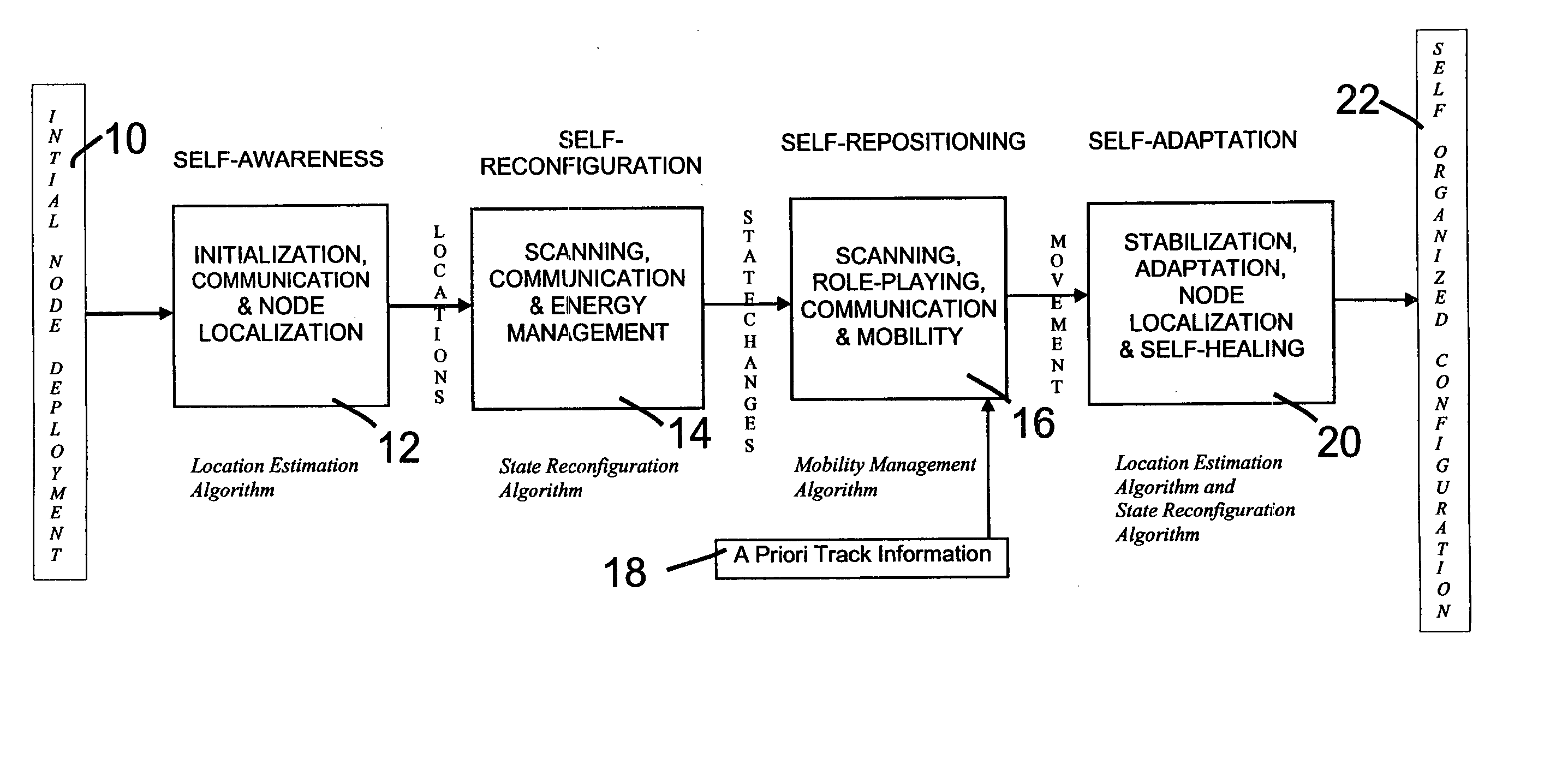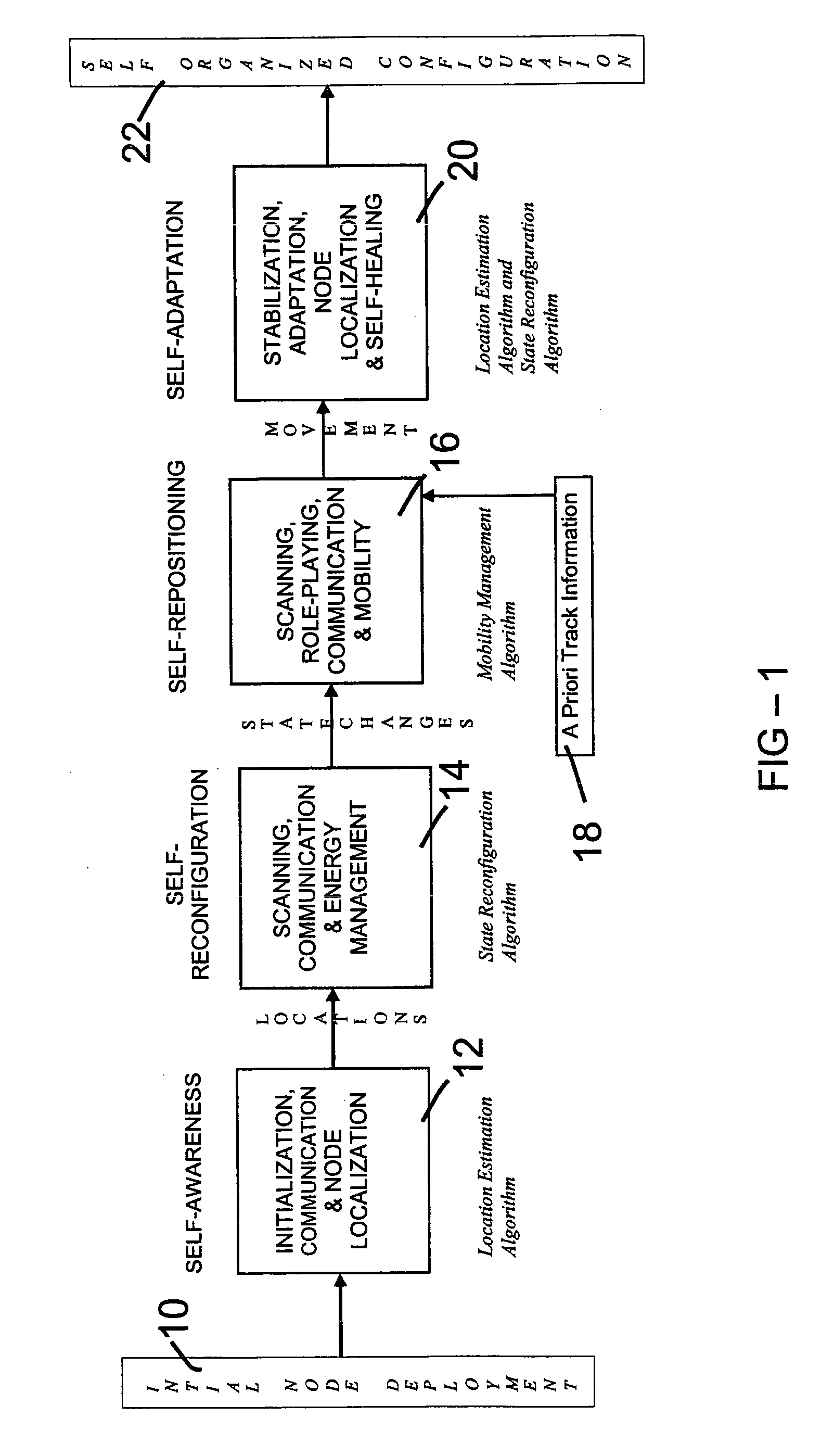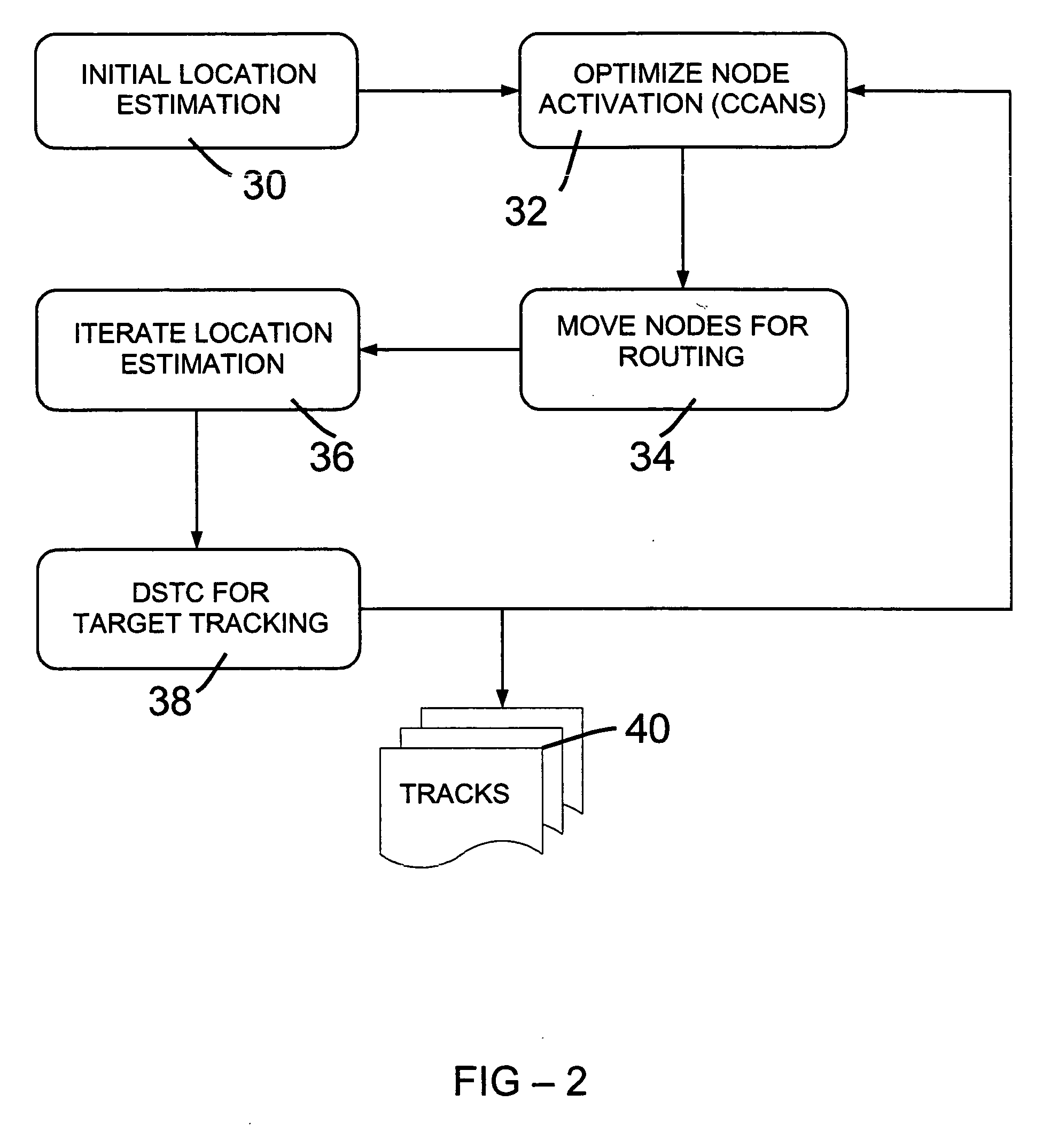Self-organizing sensor node network
a sensor node and network technology, applied in the field of self-organizing systems, can solve the problems of inefficiency and wasted energy, and it is not possible to deploy each node, so as to reduce power consumption, improve coverage, and reduce the minimum acceptable degree of coverage
- Summary
- Abstract
- Description
- Claims
- Application Information
AI Technical Summary
Benefits of technology
Problems solved by technology
Method used
Image
Examples
example scenario
Protocol Operation in Example Scenario
[0114] Operation of an improved protocol according to the present invention in an example scenario may use the following stages:
[0115] Stage 1: (Real-time DSTC Tracking)
[0116] 1) A target (mobile robot) enters combat zone
[0117] 2) Virtual & real (static & mobile) nodes running the DSTC algorithm track the path of the target.
[0118] 3) The track is displayed on a screen.
[0119] Stage 2: (Self-organization Simulation)
[0120] 4) A Network Simulator (NS) reads the initial network configuration, creates and positions simulated nodes as per the initial deployment. Nodes are all active at the onset
[0121] 5) Location Estimation algorithm determines locations of all simulated nodes (self-awareness)
[0122] 6) Nodes can either remain active or become inactive (switching off node services) to minimize energy consumption and maximize node coverage yet ensuring connectivity, based on a token passing mechanism. The density of active nodes may become consid...
PUM
 Login to View More
Login to View More Abstract
Description
Claims
Application Information
 Login to View More
Login to View More - R&D
- Intellectual Property
- Life Sciences
- Materials
- Tech Scout
- Unparalleled Data Quality
- Higher Quality Content
- 60% Fewer Hallucinations
Browse by: Latest US Patents, China's latest patents, Technical Efficacy Thesaurus, Application Domain, Technology Topic, Popular Technical Reports.
© 2025 PatSnap. All rights reserved.Legal|Privacy policy|Modern Slavery Act Transparency Statement|Sitemap|About US| Contact US: help@patsnap.com



